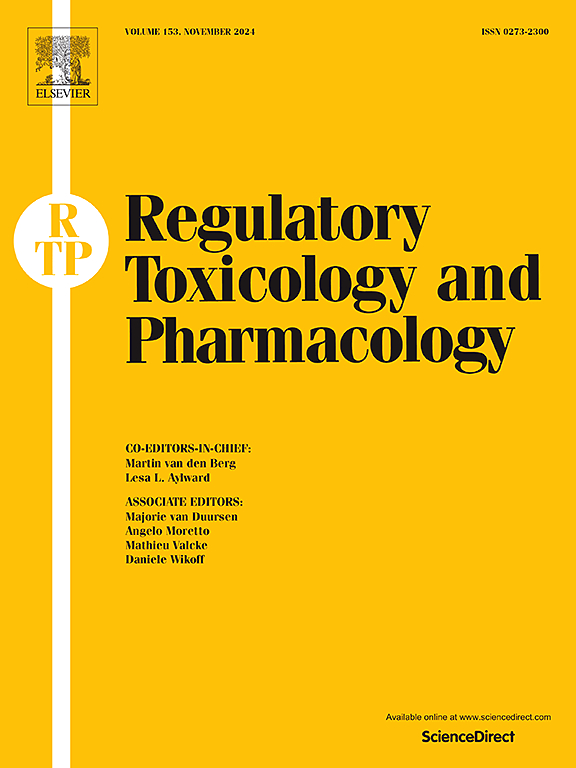2017 - 2023年FDA批准的505(b)(2)类新药与NMPA批准的2类新药的多维度比较研究:揭示改性新药的趋势、特征和监管
IF 3.5
4区 医学
Q1 MEDICINE, LEGAL
引用次数: 0
摘要
改良的新药是通过重新利用现有的治疗剂来推进创新疗法的关键。监管框架,包括相关法规和政策,在塑造这些药物的发展和演变中起着至关重要的作用。本回顾性研究系统比较了2017年至2023年美国505(b)(2)新药申请(NDA)途径和中国2类NDA途径的改性新药监管批准情况,重点分析了注册分类、可获得性、治疗适应症、剂型、修改、临床优势和临床研究设计等方面的差异。研究结果表明,美国有更详细和全面的分类系统,以及更多的批准数量(417对99)。此外,与美国相比,中国批准的改性新药在适应症分布、剂型、修饰等方面仍存在较大差距。值得注意的是,针对2类nda进行的验证性临床研究比例(81.4%)高于505(b)(2) nda(41.0%),在使用主动对照方面存在显著差异(中国为48.6%,美国为26.4%,P=0.002)。此外,在改良新药中结合新兴技术给当局带来了技术和监管方面的挑战。它提出了一个值得思考的问题:监管机构将如何评估采用全新技术开发的医疗产品。因此,建议中国监管机构完善注册分类,重新评估改良新药的定位,并在政策和监管框架内扩大临床优势的定义。这些措施对于解决未满足的医疗需求和促进改良新药的有利生态系统至关重要。本文章由计算机程序翻译,如有差异,请以英文原文为准。
A multi-dimensional comparative study of 505(b)(2) NDAs approved by FDA and Class 2 NDAs approved by NMPA from 2017 to 2023: Uncovering trends, characteristics, and regulation of modified new drugs
Modified new drugs are pivotal in advancing innovative therapies through repurposing existing therapeutic agents. The regulatory framework, including the pertinent regulations and policies, plays a crucial role in shaping the development and evolution of these drugs. This retrospective study systematically compared the regulatory approvals of modified new drugs via the 505(b)(2) new drug application (NDA) pathway in the United States (US) and Class 2 NDA pathway in China from 2017 to 2023, which focused on distinctions in registration classifications, availability, therapeutic indications, dosage forms, modifications, clinical advantages and clinical study designs. The findings indicate that the US has more detailed and comprehensive classification systems, as well as a higher number of approvals (417 vs. 99). Moreover, the modified new drugs approved in China still exhibit significant gaps in indication distribution, dosage forms, and modifications compared to those in the US. Notably, a greater proportion of confirmatory clinical studies were conducted for Class 2 NDAs (81.4 %) than 505(b)(2) NDAs (41.0 %), with a significant difference in the use of active controls (48.6 % in China vs. 26.4 % in the US, P = 0.002). Additionally, the combination of emerging technologies in modified new drugs presents both technical and regulatory challenges for authorities. It raises worthwhile questions about how regulators will evaluate medical products developed with entirely new technologies. Therefore, it is recommended that Chinese regulators refine registration classifications, reassess the positioning of modified new drugs, and expand the definition of clinical advantage within the policy and regulatory framework. These measures are essential for addressing unmet medical needs and fostering a conducive ecosystem for the advancement of modified new drugs.
求助全文
通过发布文献求助,成功后即可免费获取论文全文。
去求助
来源期刊
CiteScore
6.70
自引率
8.80%
发文量
147
审稿时长
58 days
期刊介绍:
Regulatory Toxicology and Pharmacology publishes peer reviewed articles that involve the generation, evaluation, and interpretation of experimental animal and human data that are of direct importance and relevance for regulatory authorities with respect to toxicological and pharmacological regulations in society. All peer-reviewed articles that are published should be devoted to improve the protection of human health and environment. Reviews and discussions are welcomed that address legal and/or regulatory decisions with respect to risk assessment and management of toxicological and pharmacological compounds on a scientific basis. It addresses an international readership of scientists, risk assessors and managers, and other professionals active in the field of human and environmental health.
Types of peer-reviewed articles published:
-Original research articles of relevance for regulatory aspects covering aspects including, but not limited to:
1.Factors influencing human sensitivity
2.Exposure science related to risk assessment
3.Alternative toxicological test methods
4.Frameworks for evaluation and integration of data in regulatory evaluations
5.Harmonization across regulatory agencies
6.Read-across methods and evaluations
-Contemporary Reviews on policy related Research issues
-Letters to the Editor
-Guest Editorials (by Invitation)

 求助内容:
求助内容: 应助结果提醒方式:
应助结果提醒方式:


